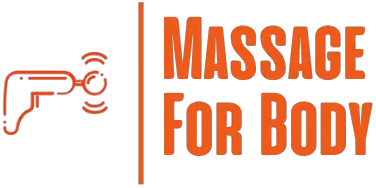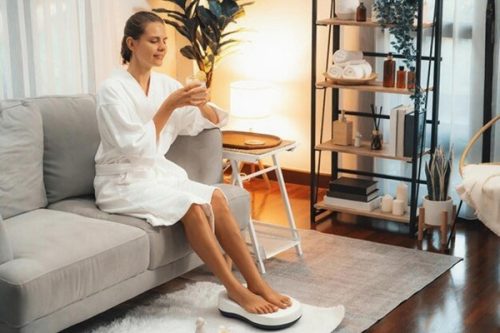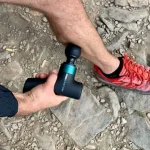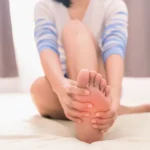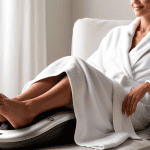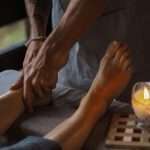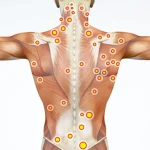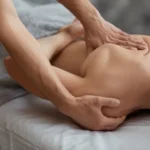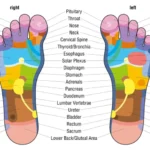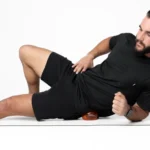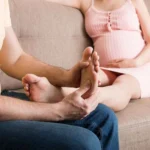Your feet take on the weight of your world—day in and day out. Whether you’re a runner, a retail worker, or simply someone who spends too much time on their feet, using a foot massager can deliver serious relief. But to enjoy the full benefits, it’s important to know exactly how to use a foot massager correctly and safely.
This guide breaks down everything you need to know to make the most of your foot massager—from selecting the right type, understanding its functions, and integrating reflexology concepts, to mastering safe and effective routines that suit your needs. Let’s dig your heels into the details.
Table of Contents
Understanding the Types of Foot Massagers and Their Best Uses
Manual Foot Rollers
Manual foot rollers are basic yet effective tools made from wood, silicone, or hard plastic. These cylindrical or spiked rollers require you to move your feet manually across the surface, applying pressure and targeting specific zones.
To use one effectively, sit in a comfortable chair and place the roller under your arch. Gently press your foot down and slowly roll it back and forth. After two to five minutes, switch feet. You can focus on different parts of your sole, like the heel, arch, or ball, to stimulate specific pressure points associated with reflexology.
Although these tools don’t offer heat or vibration, their simplicity and portability make them a favorite for those wanting more control over pressure and technique. Many people also consider them a cost-effective form of therapeutic foot massager.
💡 Best for: People who prefer hands-on pressure control, travelers, and anyone on a budget.
Electric Shiatsu Foot Massagers
These massagers simulate the pressure and motion of a shiatsu therapist’s hands. They typically feature rotating nodes that knead deeply into the feet, often with added heat functions for extra relaxation.
To use, position the unit on the floor, plug it in, and place your feet into the chambers. Sit back and choose your intensity and heat levels. Begin on the lowest setting and adjust as you grow accustomed. Sessions usually last between 15 and 20 minutes. These machines are ideal for people seeking relief from chronic tension or deep tissue stimulation, making them one of the most effective types of therapeutic foot massager options available.
💡 Best for: Athletes, runners, and individuals with persistent foot pain or tightness.
Compression Foot Massagers
Unlike rollers and kneading models, compression foot massagers use air pressure. The device inflates and deflates around the feet and calves, gently squeezing them in rhythmic cycles.
This style is excellent for improving circulation, reducing swelling, and supporting vascular health—especially beneficial for those with sedentary lifestyles. Simply slide your feet into the designated sleeves, select your pressure level, and let the massager run its programmed cycle.
👉 Looking for product recommendations? See our full review of the Best Foot Massagers here.
💡 Best for: Office workers, older adults with mild edema, and individuals with poor circulation.
Heated Foot Spas with Massage Jets
These combine water therapy with gentle massage through bubbles, vibration, and sometimes rotating elements. They’re less intense than shiatsu-style models but provide exceptional relaxation and skin-softening benefits.
Begin by filling the spa with warm water—never hot. Add Epsom salts or essential oils if desired. Soak your feet for 10–20 minutes while the water movement soothes your muscles. While these spas don’t target reflexology zones as directly, they’re perfect for a calming wind-down or pre-massage routine.
💡 Best for: People with dry or cracked feet, individuals seeking a spa-like experience, and anyone recovering from long periods of standing.

Exploring Foot Reflexology and How Massagers Stimulate Pressure Points
Foot reflexology is a therapeutic method based on the belief that specific areas of the feet correspond to organs and systems throughout the body. Stimulating these zones may support wellness and alleviate tension elsewhere.
Many foot massagers unintentionally activate these zones—especially rollers and shiatsu units—providing reflexology-like benefits even without manual mapping. For example:
👉 The tips of the toes correspond to the head and sinuses.
👉 The ball of the foot links to the chest and lungs.
👉 The arch is tied to digestive organs like the liver, kidneys, and pancreas.
👉 The heel and outer edges relate to the lower back and sciatic nerve.
To deepen the experience, you can reference a reflexology chart and consciously focus the massager on specific zones for 30–60 seconds at a time, pausing to breathe deeply and observe your body’s response.
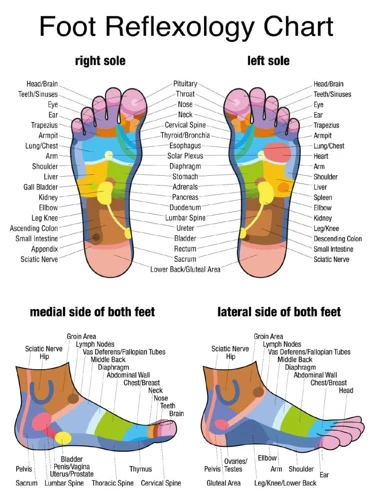
The Proven Benefits of Regular Foot Massager Use
Using a foot massager consistently can have wide-reaching benefits beyond just tired feet. Here’s how it supports your overall wellness:
🌿 Relief from Foot and Heel Pain
Foot massagers help alleviate plantar fasciitis, heel spurs, and fatigue by reducing muscle tightness and increasing flexibility.
“After just a week of nightly massage sessions, my heel pain has noticeably decreased. I wake up with less stiffness.” — Susan M., 54
💓 Enhanced Circulation and Reduced Swelling
Massagers that use vibration, kneading, or compression stimulate blood flow and reduce fluid retention in the ankles and feet. Studies show that massage therapy can improve peripheral circulation, which is especially helpful for people who sit for extended periods.
🧠 Reduced Stress and Cortisol Levels
A therapeutic foot massager can calm the nervous system and lower cortisol, especially when paired with breathwork or calming music. Regular sessions support mood stability and may even reduce symptoms of mild anxiety.
💧 Lymphatic Support and Detoxification
Gentle massage helps move lymph fluid, promoting detoxification and reducing bloating. This effect can be particularly helpful for those with hormonal fluctuations or who experience water retention.
😴 Improved Sleep Quality
Regular evening sessions support deep relaxation, easing the transition to restful sleep. Reflexology has even been linked to better sleep outcomes in adults with insomnia.
How Often Should You Use a Foot Massager?
🛌 For relaxation or sleep improvement: 10–15 minutes daily
🔥 For chronic pain: 3–5 sessions per week
💧 For lymphatic support or swelling: every other day
🧭 For reflexology: 1–2x per week
Start slowly and increase gradually. Overuse can lead to soreness, while consistency brings the best long-term effects.
Techniques and Tips for an Enhanced Experience
🕯️ Set the mood: Use aromatherapy and ambient lighting
🌿 Essential oils: Follow with a manual foot rub using oil
🧦 Cushion the pressure: Use a towel if sensitivity arises
💧 Warm up your feet: Soak in Epsom salt water beforehand
🧘 Breathe deeply: Sync massage with breath to calm your body
Mistakes to Avoid When Using a Foot Massager
⚠️ Don’t use it for too long—30 mins max per session
⚠️ Avoid if you have open wounds or infections
⚠️ Don’t skip hydration post-session
⚠️ Sit properly to avoid back or leg strain
Health Conditions That Require Caution
🚫 Diabetes with neuropathy
🚫 Pregnancy (3rd trimester)
🚫 DVT or other clotting conditions
🚫 Fractures, severe bruises, or wounds
🚫 Unexplained foot pain
Always consult a doctor if you’re managing chronic or circulatory health issues.
Frequently Asked Questions
Can I use a foot massager daily?
Yes—especially for stress relief and circulation. Just limit sessions to 10–30 minutes.
Do foot massagers help with neuropathy?
They may relieve tingling or numbness. Choose gentle settings and check with your doctor first.
Is a foot massager good after workouts?
Absolutely. It can reduce muscle soreness and improve recovery.
Better before bed?
Yes—it helps signal the body to relax and promotes restful sleep.
Are they safe?
Yes, when used correctly. Always avoid water with electric models and monitor for any discomfort.
Manual foot rub or machine?
Why not both? A foot rub offers personalized pressure and care, while a therapeutic foot massager provides convenience and consistency.
Final Thoughts
Knowing how to use a foot massager effectively is the key to unlocking real, lasting relief and relaxation. Whether you’re easing soreness, supporting circulation, or adding a moment of calm to your day, the right tool—and technique—makes all the difference.
Don’t forget: combining your massager with foot reflexology and a post-session foot rub amplifies the benefits. Whether you spend your day standing, walking, or chasing after kids, your feet deserve this moment of care.
✅ Quick Recap
👉 Choose the right foot massager for your needs and body type
👉 Start slow—10 to 15 minutes a session is enough
👉 Use before bed for relaxation or after a workout for recovery
👉 Pair with reflexology, aromatherapy, or a warm soak
👉 Stay consistent to see long-term results
👉 Check out our guide to the Best Foot Massagers to find your perfect match
Related Posts
📚References
- Cleveland Clinic – Foot Massage Benefits
- Healthline – What Is Reflexology?
- NIH – Massage Therapy in Pain Management
- Very Well Health – Benefits of Foot Massage
⚠️ Disclaimer:
This article is for informational purposes only and does not constitute medical advice. Always consult with a licensed healthcare provider or certified massage therapist before beginning any new treatment, especially if you have pre-existing health conditions or concerns.
